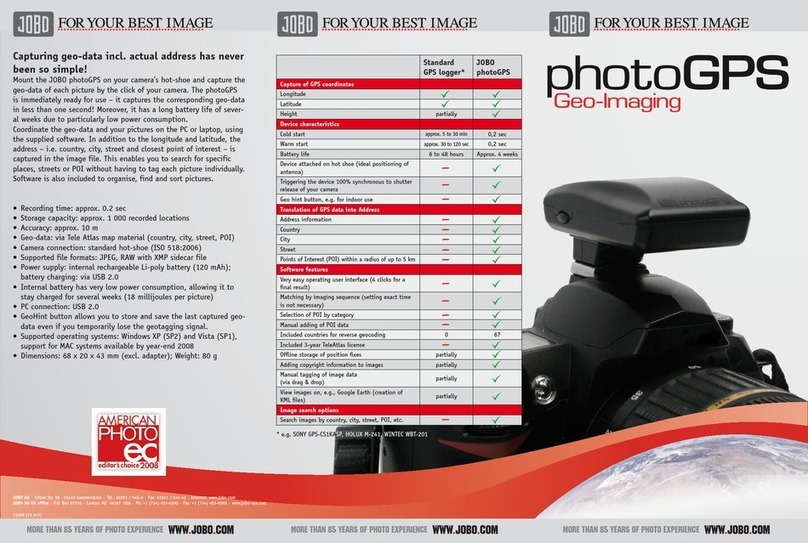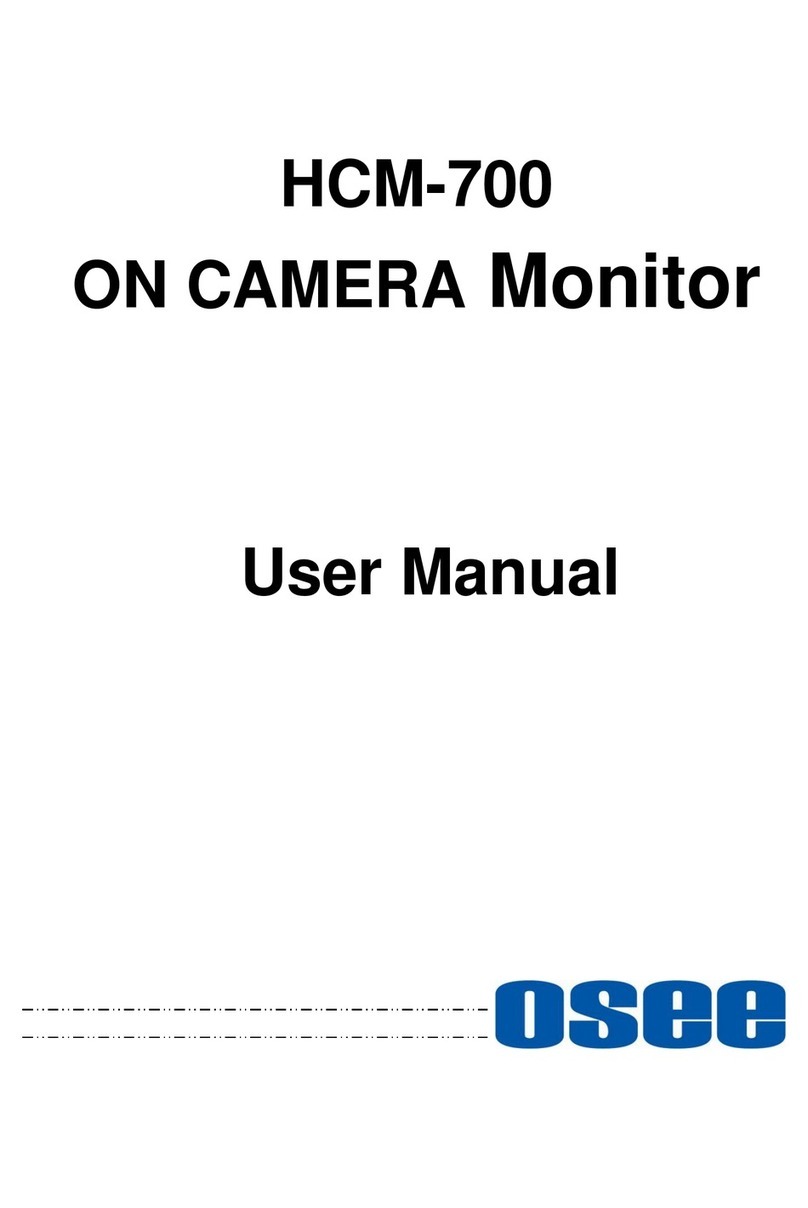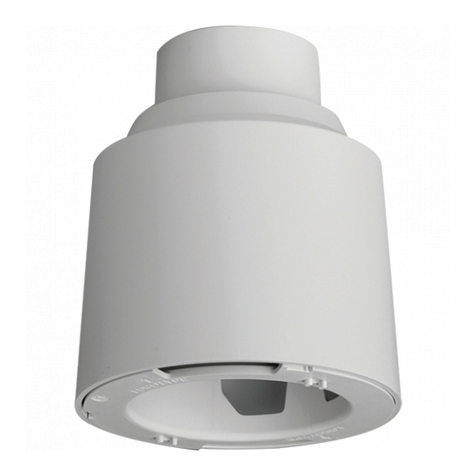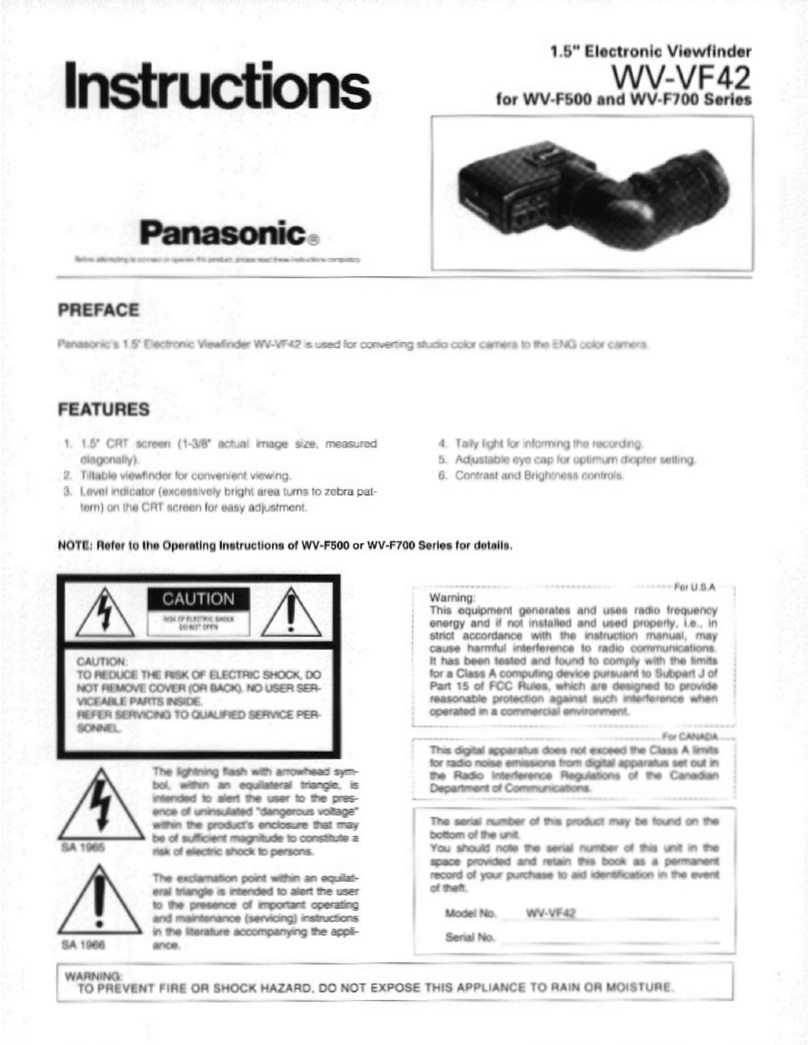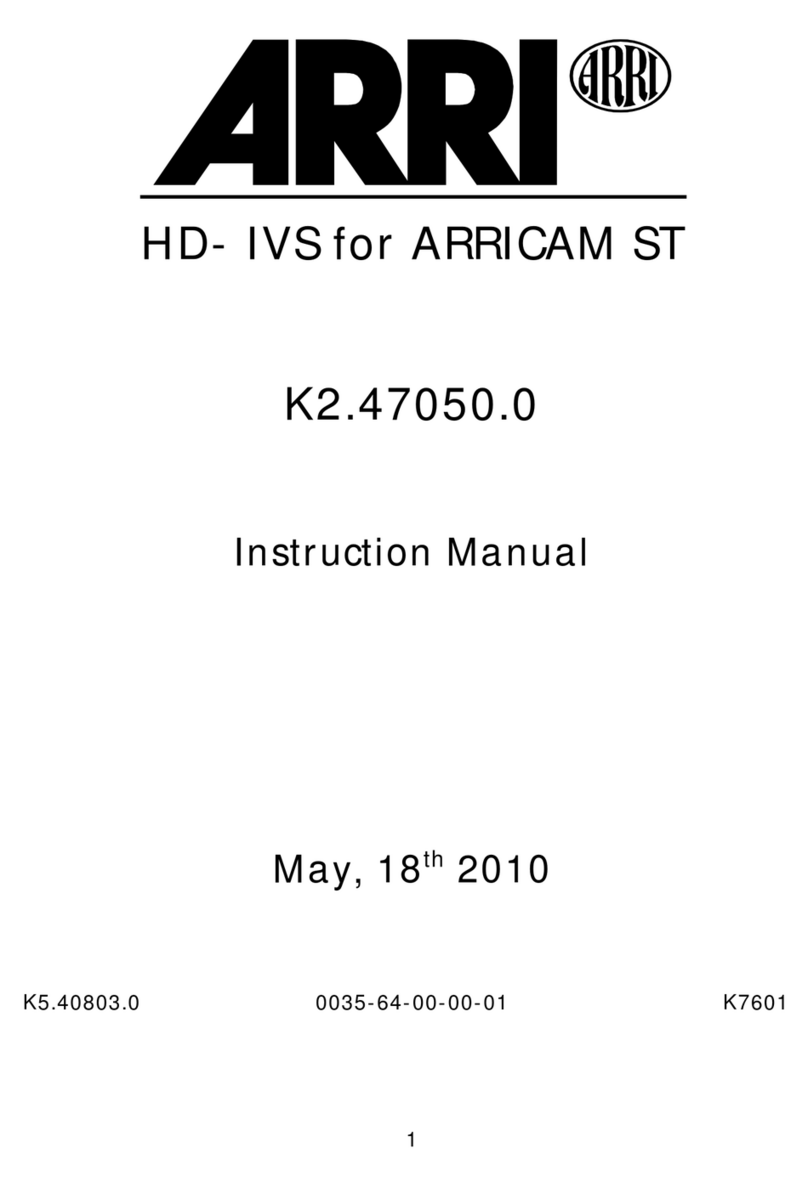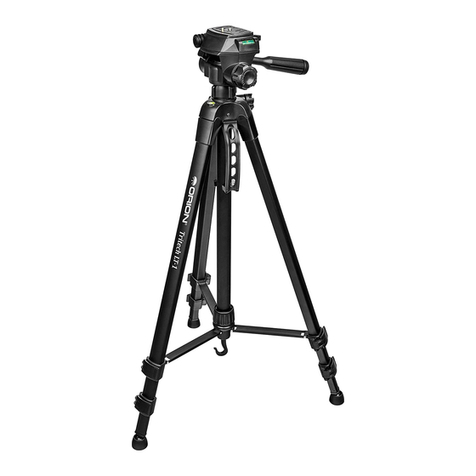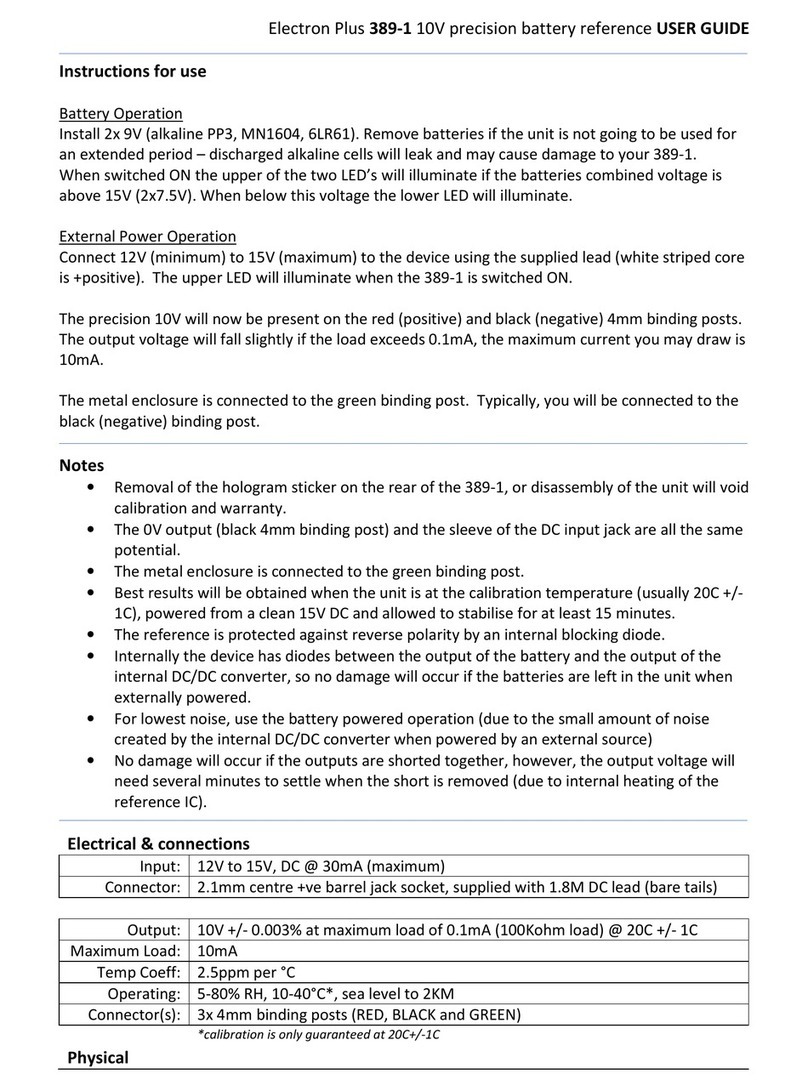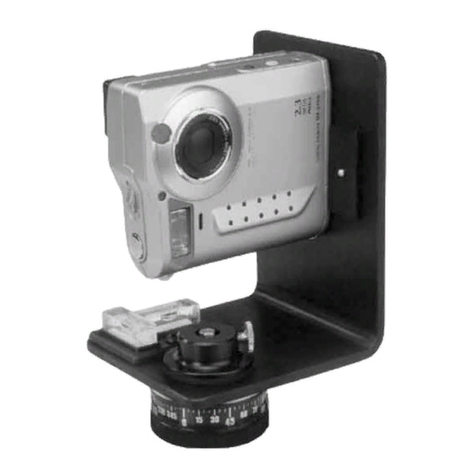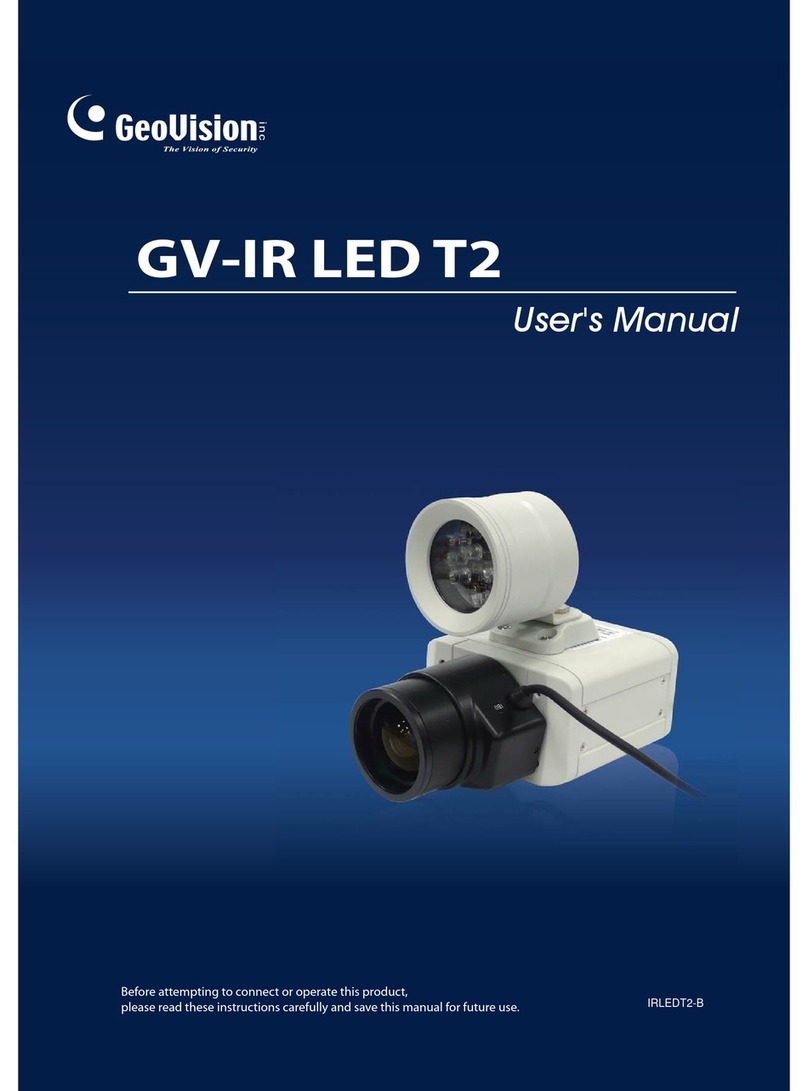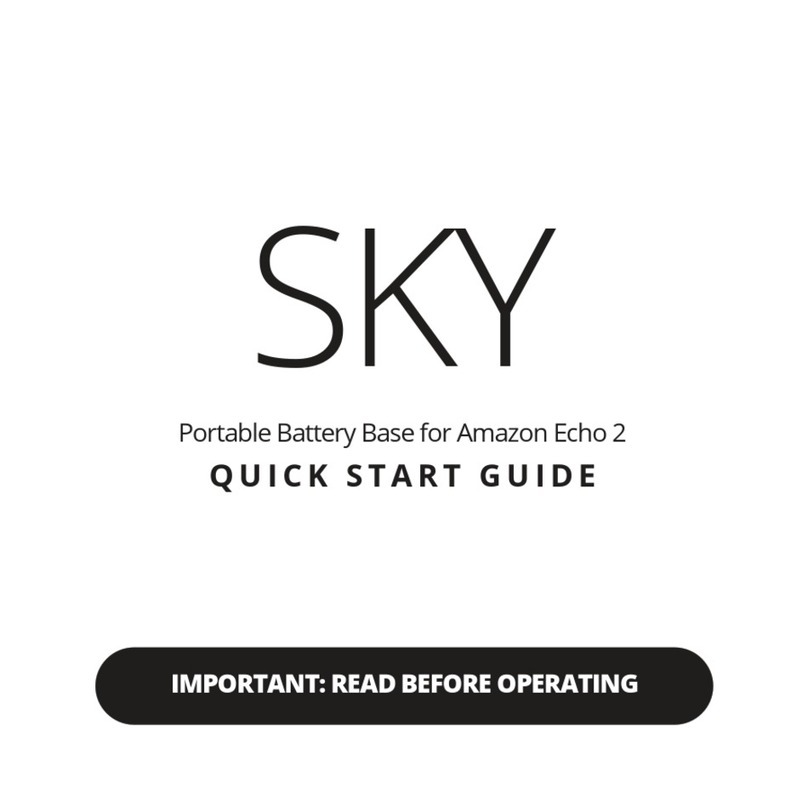EternaCell LSe Series User manual

LSe and BLSe ran e
Operating, Installation &
Maintenance Instructions


i
1.0 Introduction ...................................................................................1
2.0 Recommendations........................................................................1
3.0 Safety Rules..................................................................................1
4.0 Delivery and Storage.....................................................................2
5.0 Electrolyte .....................................................................................2
5.1 Filling Dry Cells.....................................................................3
6.0 Battery Room................................................................................3
7.0 Installation.....................................................................................3
8.0 Charging........................................................................................4
8.1 Initial Charge of Dry Cells.....................................................4
8.2 Filled and Charged Cells (Freshening Charge) ....................5
8.3 Charging in Service...............................................................6
9.0 Specific Gravity.............................................................................7
10.0 Maintenance..................................................................................7
10.1 Monthly .................................................................................7
10.2 Annually................................................................................7
10.3 Topping-up............................................................................8
11.0 Maintenance Report......................................................................8
12.0 Additional Information ...................................................................8
13.0 Technical Data..............................................................................9


1
1.0 Introduction
Standby batteries are generally used to support equipment that needs continuous, reliable service even when the
grid supply has failed.
To ensure optimum performance and longest life, lead-acid batteries require good maintenance practices. In
addition, basic electrical and chemical safety precautions must be taken to protect personnel and equipment.
The scope of this document is to supply the necessary instructions to correctly store, handle, install, use and
maintain Eternacell (B)LSe batteries.
2.0 Recommendations
Carefully read this entire manual upon receipt before installing or operating the battery.
FAILURE TO COMPLY WITH THESE INSTRUCTIONS MAY CAUSE INJURY TO PEOPLE AND
DAMAGE TO EQUIPMENT OR THE BATTERY ITSELF.
Keep this manual in close proximity to the battery and easily accessible to personnel working on or near the
battery.
3.0 Safety Rules
When handled correctly, batteries are safe. However, there are some basic precautions that must be observed at
all times to protect personnel and the environment.
Batteries produce explosive gasses.
They contain diluted sulfuric acid (electrolyte) which is a corrosive substance. When handling and working with
electrolyte always use protective clothing and equipment such as rubber gloves and goggles. If acid is spilled on
the skin, wash immediately with copious amounts of clean water, then cover with dry gauze. If acid comes into
contact with the eyes, flush with clean water for at least 15 minutes. In all cases, obtain immediate medical
attention.
Exposed metal parts of the battery always carry a voltage and are electrically live with the risk of short circuits.
Avoid electrostatic discharge. Before starting work on the battery, discharge any static electricity buildup.
Wearing anti-static boots or wristbands is a good way to avoid static altogether.
Always take the following precautions:
•Keep batteries upright.
•Use insulated tools.
•DO NOT place or drop metal objects on top of the battery.
•DO NOT wear watches, rings or other jewelry. Remove any articles of clothing with metal parts that might
come in contact with the battery terminals.
•DO NOT smoke and DO NOT use open flames or create electric sparks.
•Make sure that first aid kits and fire extinguishers are easily accessible.
•Make sure that water facilities are available in case of accidental contact with acid occurs.
•Have neutralizing products easily accessible in case of spillage.
Used batteries contain hazardous and recyclable materials. They must not be
disposed with normal waste. Methods of return and recycling must conform to the
federal, state and local regulations in operation at the site where battery is located.

2
4.0 Delivery and Storage
Unpack the cells as soon as they are delivered.
Verify that the equipment has been delivered in good condition. Any damage must be reported immediately to the
carrier and the damaged items retained for inspection by the carrier’s representative.
For cells supplied filled and charged, check that the acid level in all the cells is at the MAX level. If necessary, fill
them with dilute sulfuric acid with the correct specific gravity (see characteristics described under section 5).
If the cells cannot be installed immediately, store them in a clean, cool, dry place.
To avoid damage to containers and lids, do not expose the cells to direct sunlight.
STORAGE TIME FOR FILLED AND CHARGED CELLS IS LIMITED. IT IS ESSENTIAL THAT THEY
ARE PLACED ON CHARGE NO MORE THAN 90 DAYS FROM THE DATE OF SHIPMENT. AT
HIGHER TEMPERATURE, THAT TIME IS REDUCED. FAILURE TO OBSERVE THIS CONDITION MAY
RESULT IN SIGNIFICANTLY REDUCED CAPACITY AND SERVICE LIFE OR PERMANENT DAMAGE
TO THE CELLS, AND MAY VOID PRODUCT WARRANTY.
If the cells are to be stored for more than 90 days, they should undergo a freshening charge carried out according
to the instructions in section 8.0.
Charge should be carried out with the shipping cases open, or the cells completely unpacked, and with adequate
ventilation to disperse the gases formed while charging.
If continuous charging is not possible, the battery should be given a freshening charge at least every 60 days until
permanently installed and placed on float charge.
If the battery is supplied in a dry-charged condition (without electrolyte), it can be stored for up to 3 years,
provided that it is adequately protected against condensation and the effects of high humidity. For filling and
commissioning of dry-charged batteries, see instructions given under sections 5.1 and 8.1.
5.0 Electrolyte
The following table gives specific gravity data at 77°F (25°C) for fully charged (B)LSe cells with the electrolyte at
the maximum level:
Nominal
Specific Gravity
(kg/L)
Specific Gravity
Range
(kg/L)
Specific Gravity for
Filling Dry Charged Cells
(kg/L)
1.240 1.230 – 1.250 1.230
High quality electrolyte for standby lead-acid batteries (which is a solution of pure sulfuric acid diluted with distilled
water to the correct concentration) is required for the first filling of dry charged cells. If the electrolyte has been
supplied by Eternacell, store it in a safe place until required.
If electrolyte is purchased locally, make certain its characteristics are in accordance with the following table:
Impurity Electrolyte for first filling
(mg/l) Electrolyte for refilling
(mg/l)
Copper 0,5 0,5
Heavy metals (As, Bi, Sn, Sb) 2 6
Iron 30 100
Chlorine 5 200
Total azote 60 60
Organic substances 50 50
Other impurities 250 800

3
When electrolyte is sourced locally, we recommend that an additional 10% is purchased to cover any loss or
spillage during handling and filling.
For the quantity of electrolyte needed, please refer to cell technical data given under section 13.0. Always check
the specific gravity of the electrolyte before filling the cells. Minor adjustments may be made by adding water to
lower the specific gravity or by adding acid to raise the specific gravity.
5.1 Filling Dry Cells
Always use glass or plastic containers and funnels to fill the cells. Never use metallic materials;
electrolyte may corrode them or react on contact. Fill the cells to the “MAX” line and wait to allow
the acid to soak into separators and plates.
After approximately 3 hours the electrolyte level will drop due to the absorption. Top to the “MAX”
line again.
The quantity of electrolyte required to fill each cell is given in section 13.0.
Always fill the cells with electrolyte after installation on battery racks.
CELLS FILLED ON SITE MUST BE GIVEN AN INITIAL CHARGE AS SOON AS
POSSIBLE. DO NOT STORE FILLED CELLS FOR MORE THAN 18 HOURS WITHOUT
CHARGING THEM.
6.0 Battery Room
The battery room must be dry, clean and free of vibration.
The room must be properly sized to enable installation, inspection, topping-up and maintenance. It must also be
properly ventilated, especially during charge. Its temperature should be as moderate as climate allows, preferably
between 50°F (10°C) and 80°F (27°C). The battery will give its best performance when working within the range
of 68°F (20°C) to 77°F (25°C), but will function at temperatures between 0°F (-18°C) and 125°F (52°C). High
temperatures increase the performance but reduce battery life, while low temperatures reduce the
performance.
The entry doors of battery room must be provided with warning signs banning smoking, sparks and open flames.
The batteries should be installed on suitable racks properly sized in loading capacity and dimensions. The layout
must enable easy access to all cells.
Racks can be made of wood, fiberglass or steel with acid-proof coating. If steel racks are used they must be
equipped with rubber or plastic insulators to avoid contact between the battery and the metal.
The rack location and ventilation system should be such that the maximum temperature differential between cells
does not exceed 5°F (3°C).
BATTERY ROOMS MUST COMPLY WITH ALL FEDERAL, STATE AND LOCAL CODES AND
ORDINANCES IN EFFECT AT THE TIME OF INSTALLATION.
7.0 Installation
Before installing the cells, clean and dry all parts. In particular, clean and dry lids and jars. Remove the
protective covers from the terminal posts and clean them with a soft, clean cloth. If spilled acid is present, use a
rag dampened in a water and baking soda solution to remove acid from the post bodies. If spilled acid is found in
the post inserts, soak the part with this solution and then dry. Do not let the solution get into the cells.
If the terminal posts surface is slightly white, lightly abrade it with a fine grit abrasive paper and remove oxidation.
Do not use a wire brush and be especially careful not to break through the lead plating. Wipe off any dust and
protect the post body with a thin coating of no-oxide grease.

4
Place the cells on the rack and make sure that the spacing allows the accommodation of the supplied inter-cell
connectors (approximately 0.4”). Most batteries have cells connected in a simple series arrangement, so the cells
should be arranged to preserve the polarity sequence. I.e., (+)…(-)…(+)…(-)…etc.
NEVER LIFT CELLS BY THE TERMINAL POSTS. ALWAYS USE APPROPRIATE DEVICES (SUCH AS
LIFTING STRAPS AND SUITABLE MECHANICAL EQUIPMENT) TO PREVENT INJURY TO
PERSONNEL OR DAMAGE TO THE CELLS.
For batteries to be installed on multiple tiers, start by placing the cells on the lower tier on either side of the frame
where the stand sections meet. Any unused stand space should be on the upper tier.
For batteries on stepped racks, leave any unused space on the back (top) step.
Where multiple racks are arranged end-to-end, adjust the position of the adjacent end cells to accommodate the
flexible inter-rack connectors supplied.
Take particular care to preserve the positive to negative sequence when using flexible inter-tier, inter-step or inter-
rack connectors between rows of cells. Leave the main positive and negative terminals of the battery free for
connection to the charger and loads.
Check cell alignment.
Prepare the inter-cell connectors by lightly abrading the contact surfaces with a fine grit abrasive paper. Do not
use a wire brush and be especially careful not to break through the lead plating.
Apply a light coating of no-oxide grease to the contact-making areas of each connector. This is best done by
carefully melting the grease and dipping connector ends (it is unnecessary to coat the central part of the
connector).
Fit the inter-cell and inter-tier connectors using the bolts, nuts and washers supplied. Before assembly, lightly
smear no-oxide grease on the surfaces of all hardware.
Use insulated wrenches or sockets to tighten the parts firmly together (see the table below for torque settings).
BLSe block batteries 6V - 12V 70 inch pounds (8 Nm)
LSe cells 2V 90 inch pounds (10 Nm)
Pay special attention to avoid short-circuiting the cells with any of the battery hardware.
Check tightness and cleanliness.
Make sure that all vent caps are closed.
Connect the positive terminal of the battery to the positive terminal of the charger and the battery negative to the
charger negative.
Number the cells with the numbers supplied with the battery. It is common practice to number the cells beginning
with #1 at the positive end of the battery and following the sequence of electrical connection of the cells to the
negative end of the battery.
8.0 Charging
8.1 Initial Charge of Dry Cells
An initial or freshening charge must be given to all batteries before being put into service. This is
most important for cells supplied in dry charged conditions and filled on site.

5
Before starting the charge, check that electrolyte temperature does not exceed 95°F (35°C). If
necessary let the battery rest until this temperature is reached.
Take individual cell readings of voltage, specific gravity and temperature before starting initial
charge.
It is advisable to use a charger, with constant voltage adjustable from 2.23 to 2.6V/cell and with
an adjustable current from 0 to 0.10 C8Amps available for the battery.
If the charger does not allow current adjustment, the maximum current should not exceed 0.10 C8
Amps.
Charge the battery with a current rate of 0.10 C8 Amps for 20 hours.
Record voltage and specific gravity readings every 3 hours while charging. Voltage readings
should be taken on every cell. Specific gravity readings can be taken on 20% of the cells
designated as pilot cells.
Electrolyte temperature should also be monitored in 2 or 3 pilot cells.
Should the temperature exceed 113°F (45°C):
decrease the charging current to 50% of its original rate or discontinue the charge and let
the battery stand on open circuit until the temperature falls to 95°F (35°C)
Resume the charging process. The charge time should be extended proportionally.
At the end of the process, the Ah delivered to the battery must be 150 – 160% of the C8rated
capacity.
After 20 hours, increase recording interval to every hour and continue charging until specific
gravity and voltage remain constant for two hours and each cell has reached a minimum of 2.6V.
If the charger does not allow the cells to reach 2.6V, the charge time shall be extended in order to
deliver the minimum number of Amp-hours into the battery. A minimum of 2.4V/cell should be
available for the initial charge process.
Following the charge, specific gravity should be recorded and must fall within the acceptable
limits as defined in section 5.0.
8.2 Filled and Charged Cells (Freshening / Commissioning Charge)
For batteries which have been supplied in a filled and charged condition, it is normal to lose
charge while in transit or during storage. For this reason, a charge should be given before putting
the battery into service. This is normally accomplished using the "equalize" voltage setting on the
charger (see section 8.3.2).
Note that the higher the voltage, the shorter the recharge time. Lower charge voltages (down to a
minimum of 2.30 V/cell) will extend the duration of the initial charge to as many as 100 hours,
depending on the available charge current.
The initial charge may be terminated when the specific gravity readings of all cells have remained
constant for at least 2 hours.
Following the charge, specific gravity should be recorded and must fall within the acceptable
limits as defined in section 5.0.
At the end of this initial charge, set the battery voltage to the Saft recommended float voltage (see
section 8.3.1).

6
8.3 Charging in Service
Once put into service, Eternacell (B)LSe standby power batteries should be charged according to
the following sections.
8.3.1 Float Charge at Constant Voltage
To maintain the battery in fully charged condition during normal battery operation or, after
a discharge, to recover 90% of nominal capacity within 20 hours, a recommended float
charge must be applied.
Recommended float voltage is 2.23 V/cell with 1.240 SG electrolyte at 77°F (25°C).
The effective charge current will be very low. However, charge current increases as a
function of temperature and age of the battery. Gassing and water consumption are
minimized at this voltage.
To verify the charge efficiency of the battery, the constant control of the electrolyte
specific gravity and temperature is essential.
Decreasing specific gravity is a symptom of insufficient charge.
Increasing specific gravity and decreasing electrolyte level are indications of excessive
charge or that the cells should be topped up.
For comparison of electrolyte specific gravity vs. temperature, please refer to section 9.0.
8.3.2 Equalize Charge
Chargers usually have two adjustable voltages: one for the “float” and one for “equalize”
(also known as "boost" or "high rate").
The equalize charge is generally required:
•when the total voltage spread between the cells is greater than 0.04 V under float
charging conditions
•for fast recharging after a discharge
•after addition of de-ionized water to assist in mixing the acid and water
•for float charge using voltages below 2.22 volts per cell (see table below)
Float V/cell Equalizing required at
these Intervals
2.22 - 2.23 Never
2.20 Every 6 Months
2.17 Every 3 Months
2.15 Every Month
Equalizing may be carried out at voltage settings above 2.30 V/cell.
Recommended values of equalize voltage are 2.33-2.4 V/cell.
The length of equalize charging required depends on the depth of discharge, electrolyte
temperature and normal float voltage level. The best guideline is to continue equalizing
until the specific gravity of the acid in the designated pilot cells remains constant for at
least 2 hours.

7
9.0 Specific Gravity
Before taking specific gravity readings, ensure that the electrolyte level is at the “MAX” line and that any
recent topping-up of de-ionized water has properly been mixed by an equalize charge (see section 8.4.2).
The specific gravity of the electrolyte varies with temperature. Consequently, hydrometer readings should
be corrected as follows:
•For every 3°F above 77°F, subtract 1 point (0.001) from the hydrometer reading.
•For every 3°F below 77°F, add 1 point (0.001) to the hydrometer reading.
•The metric equivalent correction is 1 point (0.001) for every 1.5°C.
The specific gravity of the electrolyte in new cells should be as per section 5.0. Over time there may be a
slight fall in the maximum specific gravity values obtainable at the end of charge. The specific gravity
may range ± 0.01 points within a cell at the nominal temperature of 77 F (25°C).
NEVER TRY TO INCREASE SPECIFIC GRAVITY READINGS BY ADDING ELECTROLYTE
UNLESS DIRECTED TO DO SO BY THE MANUFACTURER.
10.0 Maintenance
Proper maintenance will prolong the life of the battery and will aid in ensuring that it is capable of
satisfying its design requirements. A good battery maintenance program will serve as a valuable aid in
maximizing battery life, preventing avoidable failures, and reducing premature replacement. Only
personnel knowledgeable of batteries and required safety precautions should perform battery
maintenance.
For regular monitoring of the battery condition, a pilot cell should be selected. The pilot cell should be
near the middle of the battery string (for batteries consisting of more than 60 cells, it is advisable to select
one pilot for every 60 cells).
When measuring voltages, be sure the charger is on and record the voltages to three decimal places.
10.1 Monthly
Monthly battery inspection must be made while the battery is in normal float condition and should
include the following activities:
•Check the general appearance and cleanliness of the battery, the battery rack and the
battery area.
•Check for cracks in cells or electrolyte leakage.
•Check for corrosion at terminals, connectors, or racks.
•Record the overall battery float voltage measured at the battery terminals (not at the
charger).
•Record the voltages, temperature and specific gravity of the designated pilot cells.
•Check the electrolyte level of the cells.
•Clean and dry the cell lids and connectors using anti-static cloths
•Inspect the charging system, ambient temperature and ventilation
•Take corrective actions, as required, in accordance with IEEE standard 450 –
Recommended Practice for Maintenance, Testing, and Replacement of Vented Lead-
Acid Batteries for Stationary Applications
10.2 Annually
Annual battery inspection must be made while the battery is in normal float condition and should
include the following activities:
•Check the general appearance and cleanliness of the battery, the battery rack and the
battery area.

8
•Check for cracks in cells or electrolyte leakage.
•Check for corrosion at terminals, connectors, or racks.
•Record the overall battery float voltage measured at the battery terminals (not at the
charger).
•Record the voltages of all the cells to three decimal places with the charger on.
•Record the electrolyte temperature of the designate pilot cells.
•Record the electrolyte specific gravity of all the cells.
•Check the electrolyte level of all the cells.
•Clean and dry the cell lids and connectors using anti-static cloths
•Tighten all connectors (see section 7.0 for torque settings).
•Record the inter-cell and terminal connections resistance.
•Inspect the charging system, ambient temperature and ventilation
•Record the charging current.
•Check the structural integrity of the battery racks.
•Take corrective actions, as required, in accordance with IEEE standard 450 –
Recommended Practice for Maintenance, Testing, and Replacement of Vented Lead-
Acid Batteries for Stationary Applications
10.3 Topping-up
The water consumption of Eternacell (B)LSe batteries is minimized when floating at 2.23V/cell at
77°F (25°C). Consumption increases at higher temperatures and/or higher float voltages.
Never allow the electrolyte level to fall below the “MIN” level line. When necessary, top the cells
with de-ionized water.
NEVER ADD ELECTROLYTE UNLESS DIRECTED TO DO SO BY THE MANUFACTURER
11.0 Maintenance Report
Keep records of the battery maintenance operations. The records should include all measurements
taken, outages, discharge tests, equalize charges, topping intervals and any corrections made to the
battery or individual cells. These records will help monitor long-term changes of the battery condition.
The battery should be given a full discharge test at 5-year intervals until signs of degradation are
observed or the battery reaches 85% of its original capacity. After either of the preceding conditions, the
tests should be performed annually until the battery has reached the end of its life.
12.0 Additional Information
For additional support or information, please contact:
Eternacell
3 Powdered Metals Drive
North Haven, CT 06473
Tel: (203) 985-2700
Fax: (203) 985-2739
Email: [email protected]
Or, visit our website at www.eternacellbatteries.com.

9
13.0 Technical Data
Dimensions (in.) Weight (lb.)
Cell Type Voltage Ah
Capacity Length Width Height Empty Filled
Volume
of Acid
(gal.)
No. of
Posts
LSe 100 2 115 4.1 8.1 16.1 21.4 32.2 1.05 2
LSe 150 2 154 4.1 8.1 16.1 26.3 36.6 1.00 2
LSe 200 2 206 4.9 8.1 16.1 32.0 44.9 1.25 2
LSe 250 2 254 4.9 8.1 16.1 36.9 48.7 1.14 2
LSe 300 2 305 5.7 8.1 16.1 42.8 57.3 1.40 2
LSe 350 2 359 7.4 8.1 16.1 49.2 70.1 2.02 2
LSe 400 2 410 7.4 8.1 16.1 54.1 73.3 1.85 2
LSe 450 2 448 7.4 8.1 16.1 59.0 77.2 1.75 2
LSe 500 2 515 5.7 8.1 28.6 70.5 100.2 2.87 2
LSe 600 2 602 5.7 8.1 28.6 80.0 109.0 2.80 2
LSe 700 2 702 7.5 8.3 28.6 100.8 137.4 3.53 4
LSe 800 2 800 7.5 8.3 28.6 110.3 145.9 3.43 4
LSe 900 2 896 9.2 8.3 28.6 123.3 169.1 4.43 4
LSe 1000 2 1000 9.2 8.3 28.6 132.8 178.2 4.39 4
LSe 1100 2 1096 10.8 8.3 28.6 145.7 201.8 5.42 4
LSe 1200 2 1200 10.8 8.3 28.6 155.2 210.5 5.34 4
LSe 1300 2 1272 10.8 8.3 28.6 164.7 218.8 5.23 4
LSe 1400 2 1376 10.8 8.3 28.6 174.1 227.6 5.17 4
LSe 1500 2 1504 14.5 8.6 27.6 194.0 264.6 6.82 6
LSe 1600 2 1600 14.5 8.6 27.6 203.5 273.2 6.74 6
LSe 1700 2 1664 14.5 8.6 27.6 212.9 281.8 6.66 6
LSe 1800 2 1800 17.7 8.6 27.6 229.1 319.5 8.73 6
LSe 1900 2 1904 17.7 8.6 27.6 238.6 327.6 8.60 6
LSe 2000 2 2000 17.7 8.6 27.6 248.0 336.2 8.52 6
Dimensions (in.) Weight (lb.)
Block Type Voltage Ah
Capacity Length Width Height Empty Filled
Volume
of Acid
(gal.)
No. of
Posts
BLSe 12-50 12 52 10.7 8.1 15.2 66.8 88.8 2.12 2
BLSe 12-100 12 103 15.0 8.1 15.2 100.4 135.8 3.43 2
BLSe 6-150 6 154 10.7 8.1 15.2 69.8 95.7 2.51 2
BLSe 6-200 6 206 15.0 8.1 15.2 88.7 127.9 3.80 2
BLSe 6-250 6 254 15.0 8.1 15.2 103.4 137.9 3.33 2
BLSe 6-300 6 285 15.0 8.1 15.2 118.2 151.0 3.17 2



L13/15-IO 0310
3 Powdered Metals Drive
North Haven, CT 06473
Tel: 203-985-2700
Fax: 203-985-2739
www.eternacellbatteries.com
This manual suits for next models
30
Table of contents
